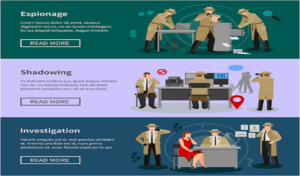Analysing terrorist group strategies and tactics

The danger of terrorism is always there in the world we live in now. From the 9/11 attacks to the bombing at the Boston Marathon, there have been a number of well-known terrorist attacks in the United States. To deal with this danger, it is important to know the plans and strategies that terrorist groups in the US use.
It is important for national security and general safety to study the plans and moves of terrorist groups. When law enforcement organisations know how these groups operate, they can better prepare for and stop possible attacks. It also lets us figure out why the attacks happened and helps us come up with better ways to stop terrorist attacks.
But it’s not easy to figure out how criminal groups plan and act. These groups often work in secret, which makes it hard to find out what they are doing. Also, terrorist groups are always changing their tactics and strategies in reaction to measures taken to stop them. This makes it very important to keep up with the latest news in order to stay ahead of any possible threats.
In this blog, we will look more closely at the different plans and methods that terrorist groups in the USA use. We will talk about the different kinds of terrorism in the United States, as well as the ways terrorist groups try to reach their goals. By learning more about these groups, we can keep ourselves and our neighbourhoods safer from the threat of terrorism.
What is terrorism in the United States?
Terrorism is a very bad crime that makes people and places in the United States less safe and secure. Terrorism is defined by US law as any action that uses violence or intimidation to achieve political or ideological goals. This can include acts of violence like bombings or killings, as well as cyber attacks and other kinds of sabotage.
In the United States, there are many different kinds of terrorism, such as domestic terrorism, foreign terrorism, and lone wolf terrorism. Domestic terrorism is when people or groups inside the country do bad things, while international terrorism is when people or groups from outside the country do bad things. Lone wolf terrorism is when a terrorist act is done by a person who is not part of a group or organisation.
Terrorist groups in the US include Al-Qaeda, ISIS, and groups like the Ku Klux Klan and the Aryan Nations that are based in the US. These groups have attacked the US, causing a lot of damage and killing a lot of people. To fight this danger and keep our communities safe, it’s important to know the different kinds of terrorism and the groups that do it.
How terrorist groups in the US do what they do
In the US, terrorist groups have used a wide range of methods to try to reach their political or moral goals. Some of these methods are bombings, kidnappings, and cyber strikes. For example, stolen commercial planes were used as weapons in the 9/11 attacks, while homemade bombs were used in the Boston Marathon bombing.
These methods are meant to make people afraid and cause trouble in order to bring attention to the group’s cause. But they often hurt harmless people and don’t help the group reach its goals.
Terrorist groups use these methods to try to reach their goals, but they don’t always work. Some attacks have done a lot of damage and killed a lot of people, but others haven’t done what they were supposed to. In the end, the success or failure of a terrorist attack relies on a lot of things, such as the target, the methods used, and how the police respond.
How terrorist groups in the US plan to do harm
In the US, terrorist groups have used a wide range of tactics to grow and reach their political or moral goals. Some of these plans are marketing, getting people to join, and getting money. For example, groups may use propaganda to share their message and attract new members, while financing is used to pay for their activities and operations.
These tactics have a big effect on how many new people join the group and how big it gets. Terrorist groups can reach people who might agree with their goals by spreading lies and other forms of communication about their cause. In the same way, giving these groups money and other resources helps them grow and bring in new people.
But there are differences in how well these plans help terrorism groups reach their goals. While propaganda and recruitment may bring in new people, they may also draw the attention of law enforcement agencies, which may not be what they want. In the same way, getting money may help the group, but it may also leave a paper trail that can be used to track them down and stop what they’re doing. In the end, the success or failure of a terrorist group’s plans relies on a number of things, such as how well law enforcement works and what the political climate is like where they operate.
How Law Enforcement in the US Deals with Terrorism
The Federal Bureau of Investigation (FBI), the Department of Homeland Security (DHS), and the National Counterterrorism Centre (NCTC) are just a few of the law enforcement bodies in the United States that work to stop terrorism. These groups work together to find and stop terrorist threats, collect information, and look into and prosecute people and groups that are involved in terrorist activities.
In the US, how well law enforcement has dealt with terrorist dangers has been hit or miss. Some strikes have been stopped or stopped short, but others have been successful and caused a lot of damage and deaths. Some responses to threats have also been criticised for being too harsh or for stepping on people’s rights.
In order to stop terrorist attacks, law enforcement agencies have to deal with a number of problems, such as how hard it is to find and follow terrorists and terrorist groups, the need to find a balance between security and civil rights, and the fact that the threat is always changing. To solve these problems, law officers and other community members need to work together on a coordinated, all-encompassing plan.
How the United States fights terrorists
In order to stop terrorist acts, the USA has taken a number of steps to stop terrorism. These steps include gathering information, keeping the borders safe, and watching. Intelligence gathering involves collecting and analysing information about possible threats, while border security involves watching and controlling the flow of people and things across a country’s borders. Some ways to keep an eye on someone are to watch their computer communications or to keep an eye on them physically.
It’s hard to tell how well these counterterrorism measures stop attacks because the success of these measures is often judged by how few attacks there are. But there have been times when these steps have helped stop or stop plans to do harm.
There are also ethical questions about counterterrorism measures, especially when it comes to civil rights and privacy. People may feel like their rights are being violated when surveillance and other monitoring methods are used. There needs to be a balance between the need for safety and the need to protect civil freedoms. In the end, the success of counterterrorism measures relies on a number of things, such as the strength of law enforcement efforts, the nature of the threat, and the public’s support and willingness to work with the government.
Conclusion
In the end, this piece looked at the plans and methods of terrorist groups in the United States. The piece has talked about how US law defines terrorism, the different tactics and strategies that terrorist groups in the US use, the law enforcement agencies that are in charge of fighting terrorism, and the counterterrorism measures that are in place in the country.
It’s clear that knowing and analysing the plans of terrorist groups is important for public and national security. With this information, law enforcement organisations can come up with effective ways to stop and stop terrorist attacks. Also, it’s important to know how these groups’ plans affect their ability to find new members, get money, and grow.
Even though it’s hard to tell how well security measures work, it’s important to keep studying and learning about terrorist groups and their plans. It lets us change and improve our efforts to stop terrorism as risks change.
In conclusion, fighting terrorism needs a multifaceted method that includes law enforcement, gathering intelligence, and the support and cooperation of the public. We can work towards a safer and more secure future if we stay aware and alert.
Read More You May Like:








